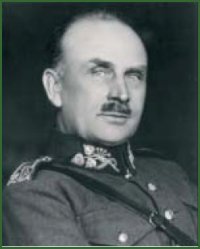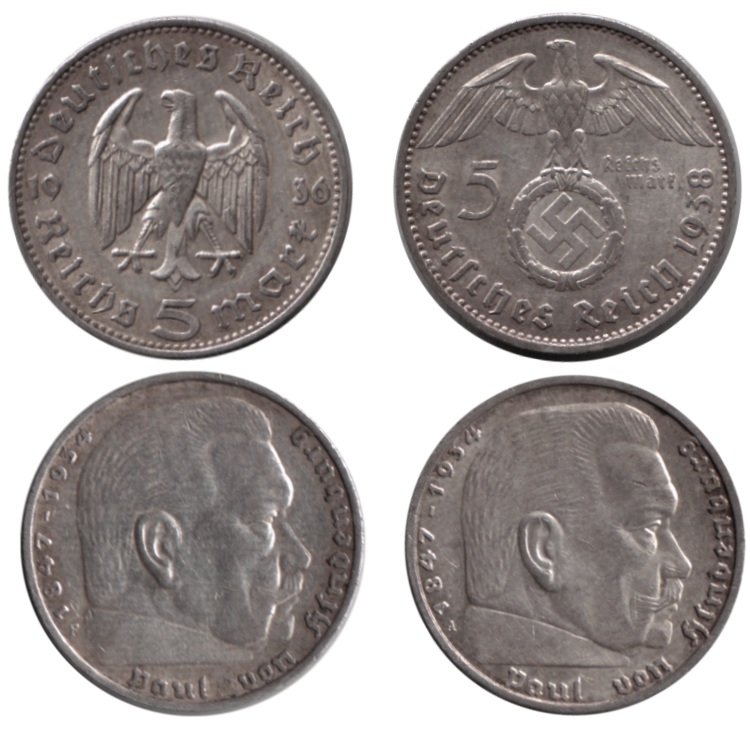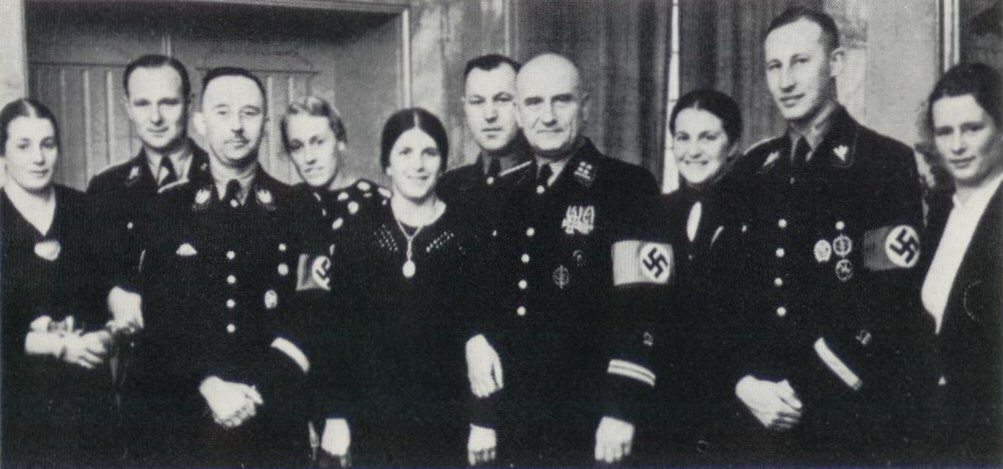|
Out Distance
Operation Out Distance was a Czech resistance group active during World War II. It was dispatched by Special Group D of the Ministry of Defence of the Czechoslovak government in exile in London. The group operated in the Protectorate of Bohemia and Moravia, a region of occupied Czechoslovakia. File:Operace Anthropoid - Adolf Opálka.jpg, Adolf Opálka File:Operace Anthropoid - Karel Čurda.jpg, Karel Čurda, became a Nazi collaborator File:Ivan Kolařík, Czechoslovak resistance fighter.jpg, Ivan Kolařík Operations At 2 AM on 28 March 1942, the group parachuted from a British Halifax aircraft which also carried the unsuccessful group Zink. Their objectives included sabotaging gasworks in Prague, delivering radio-sets to other resistance fighters, and guiding bombers to the Škoda Works in Plzeň. Due to a navigation error they landed in Ořechov, not their intended destination, resulting in the loss of significant material and pursuit by the Gestapo. Consequently, the ... [...More Info...] [...Related Items...] OR: [Wikipedia] [Google] [Baidu] |
Czech Resistance To Nazi Occupation
Czechoslovak resistance to the German occupation of the Protectorate of Bohemia and Moravia during World War II began after the occupation of the rest of Czechoslovakia and the formation of the protectorate on 15 March 1939. German policy deterred acts of resistance and annihilated organizations of resistance. In the early days of the war, the Czech population participated in boycotts of public transport and large-scale demonstrations. Later on, armed communist partisan groups participated in sabotage and skirmishes with German police forces. The most well-known act of resistance was the assassination of Reinhard Heydrich. Resistance culminated in the so-called Prague uprising of May 1945; with Allied armies approaching, about 30,000 Czechs seized weapons. Four days of bloody street fighting ensued before the Soviet Red Army entered the nearly liberated city. Consolidation of resistance groups: ÚVOD The Czech resistance network that existed during the early years of the Sec ... [...More Info...] [...Related Items...] OR: [Wikipedia] [Google] [Baidu] |
Ořechov (Jihlava District)
Ořechov () is a municipality and village in Jihlava District in the Vysočina Region of the Czech Republic. It has about 70 inhabitants. Ořechov lies approximately south of Jihlava and south-east of Prague. History The first written mention of Ořechov is from 1355. From 1420 until the establishment of an independent municipality in 1850, Ořechov was part of the Telč Telč (; ) is a town in Jihlava District in the Vysočina Region of the Czech Republic. It has about 5,100 inhabitants. The town is well known for its historic centre, which is protected as an Cultural monument (Czech Republic)#Monument reservatio ... estate and shared uts owners. Ořechov was the place where a group of parachutists landed in 1942 during the Out Distance operation. Demographics References External links * Villages in Jihlava District {{Vysočina-geo-stub ... [...More Info...] [...Related Items...] OR: [Wikipedia] [Google] [Baidu] |
People Killed By Nazi Germany
The term "the people" refers to the public or common mass of people of a polity. As such it is a concept of human rights law, international law as well as constitutional law, particularly used for claims of popular sovereignty. In contrast, a people is any plurality of persons considered as a whole. Used in politics and law, the term "a people" refers to the collective or community of an ethnic group or nation. Concepts Legal Chapter One, Article One of the Charter of the United Nations states that "peoples" have the right to self-determination. Though the mere status as peoples and the right to self-determination, as for example in the case of Indigenous peoples (''peoples'', as in all groups of indigenous people, not merely all indigenous persons as in ''indigenous people''), does not automatically provide for independent sovereignty and therefore secession. Indeed, judge Ivor Jennings identified the inherent problems in the right of "peoples" to self-determination, as i ... [...More Info...] [...Related Items...] OR: [Wikipedia] [Google] [Baidu] |
Czech Resistance Groups
Czech may refer to: * Anything from or related to the Czech Republic, a country in Europe ** Czech language ** Czechs, the people of the area ** Czech culture ** Czech cuisine * One of three mythical brothers, Lech, Czech, and Rus *Czech (surname) *Czech, Łódź Voivodeship, Poland *Czechville, Wisconsin, unincorporated community, United States See also * Čech, a surname * Czech lands * Czechoslovakia * List of Czechs * * * Check (other) * Czechoslovak (other) * Czech Republic (other) The Czech Republic The Czech Republic, also known as Czechia, and historically known as Bohemia, is a landlocked country in Central Europe. The country is bordered by Austria to the south, Germany to the west, Poland to the northeast, and ... * Czechia (other) {{disambiguation Language and nationality disambiguation pages ... [...More Info...] [...Related Items...] OR: [Wikipedia] [Google] [Baidu] |
Pankrác Prison
Pankrác Prison, officially Prague Pankrác Remand Prison (), is a prison in Prague, Czech Republic. A part of the Czech Prison Service, it is located southeast of Prague city centre in Pankrác, not far from Pražského povstání metro station on Line C. It is used in part for persons awaiting trial and partly for convicted prisoners. Since 2008, women have also been incarcerated here. History 1885–1938 The prison was built in 1885–1889 in order to replace the obsolete St Wenceslas Prison (''Svatováclavská trestnice''), which used to stand between Charles Square and the Vltava River. At the time of its construction, the site for the new prison was out of city limits, amidst fields above Nusle suburb. Nevertheless, the expanding Prague encompassed the prison within several decades. At the time of its opening, the prison was a fairly modern institution with hot air central heating; solitary confinement cells had hot water heating. The prison had gas lighting and i ... [...More Info...] [...Related Items...] OR: [Wikipedia] [Google] [Baidu] |
Hanged
Hanging is killing a person by suspending them from the neck with a noose or ligature strangulation, ligature. Hanging has been a standard method of capital punishment since the Middle Ages, and has been the primary execution method in numerous countries and regions. The first known account of execution by hanging is in Homer's ''Odyssey''. Hanging is also a Suicide by hanging, method of suicide. Methods of judicial hanging There are numerous methods of hanging in execution that instigate death either by cervical fracture or by Strangling, strangulation. Short drop The short drop is a method of hanging in which the condemned prisoner stands on a raised support, such as a stool, ladder, cart, horse, or other vehicle, with the noose around the neck. The support is then moved away, leaving the person dangling from the rope. Suspended by the neck, the weight of the body tightens the noose around the neck, effecting strangulation and death. Loss of consciousness is typically rapid ... [...More Info...] [...Related Items...] OR: [Wikipedia] [Google] [Baidu] |
Treason
Treason is the crime of attacking a state (polity), state authority to which one owes allegiance. This typically includes acts such as participating in a war against one's native country, attempting to Coup d'état, overthrow its government, spying on its military, its diplomats, its officials, or its secret services for a hostile foreign power, or Regicide, attempting to kill its head of state. A person who commits treason is known in law as a traitor. Historically, in common law countries, treason also covered the murder of specific social superiors, such as the murder of a husband by his wife or that of a master by his servant. Treason (i.e., disloyalty) against one's monarch was known as ''high treason'' and treason against a lesser superior was ''petty treason''. As jurisdictions around the world abolished petty treason, "treason" came to refer to what was historically known as high treason. At times, the term ''traitor'' has been used as a political epithet, regardless of ... [...More Info...] [...Related Items...] OR: [Wikipedia] [Google] [Baidu] |
Reichsmark
The (; sign: ℛ︁ℳ︁; abbreviation: RM) was the currency of Germany from 1924 until the fall of Nazi Germany in 1945, and in the American, British and French occupied zones of Germany, until 20 June 1948. The Reichsmark was then replaced by the Deutsche Mark, to become the currency of West Germany and then all of Germany after the 1990 reunification. The Reichsmark was used in the Soviet occupation zone of Germany until 23 June 1948, where it was replaced by the East German mark. The Reichsmark was subdivided into 100 (Rpf or ℛ︁₰). The Mark is an ancient Germanic weight measure, traditionally a half pound, later used for several coins; (''realm'' in English) comes from the official name for the German state from 1871 to 1945, . History The Reichsmark was introduced in 1924 as a permanent replacement for the '' Papiermark''. This was necessary due to the 1920s German inflation which had reached its peak in 1923. The exchange rate between the old ''Papiermark'' ... [...More Info...] [...Related Items...] OR: [Wikipedia] [Google] [Baidu] |
Assassination Of Reinhard Heydrich
Reinhard Heydrich, the commander of the German Reich Security Main Office (RSHA), the acting governor of the Protectorate of Bohemia and Moravia and a principal architect of the Holocaust, was assassinated during the Second World War in a coordinated operation by the Czechoslovak resistance. The assassination attempt, code-named Operation Anthropoid, was carried out by resistance operatives Jozef Gabčík and Jan Kubiš on 27 May 1942. Heydrich was wounded in the attack and died of his injuries on 4 June. The operatives who carried out the assassination were soldiers of the Czechoslovak Army who were prepared and trained by the British Special Operations Executive (SOE) with the approval of the Czechoslovak government-in-exile, led by Edvard Beneš. The Czechoslovaks undertook the operation to help confer legitimacy on the government-in-exile, and to exact retribution for Heydrich's brutal rule. The operation was the only verified government-sponsored assassination of a senior ... [...More Info...] [...Related Items...] OR: [Wikipedia] [Google] [Baidu] |
Reinhard Heydrich
Reinhard Tristan Eugen Heydrich ( , ; 7 March 1904 – 4 June 1942) was a German high-ranking SS and police official during the Nazi era and a principal architect of the Holocaust. He held the rank of SS-. Many historians regard Heydrich as one of the darkest figures within the Nazi regime. Adolf Hitler described him as "the man with the iron heart." Heydrich was chief of the Reich Security Main Office (including the Gestapo, Kriminalpolizei (Nazi Germany), Kripo, and Sicherheitsdienst, SD). He was also (Deputy/Acting Reich-Protector) of Protectorate of Bohemia and Moravia, Bohemia and Moravia. He served as president of the International Criminal Police Commission (ICPC, now known as Interpol) and chaired the January 1942 Wannsee Conference which formalised plans for the "Final Solution to the Jewish question"—the deportation and genocide of all Jews in German-occupied Europe. He was the founding head of the (Security Service, SD), an intelligence organisation charg ... [...More Info...] [...Related Items...] OR: [Wikipedia] [Google] [Baidu] |
Schutzstaffel
The ''Schutzstaffel'' (; ; SS; also stylised with SS runes as ''ᛋᛋ'') was a major paramilitary organisation under Adolf Hitler and the Nazi Party in Nazi Germany, and later throughout German-occupied Europe during World War II. It began with a small guard unit known as the ''Saal-Schutz'' ("Hall Security") made up of party volunteers to provide security for party meetings in Munich. In 1925, Heinrich Himmler joined the unit, which had by then been reformed and given its final name. Under his direction (1929–1945) it grew from a small paramilitary formation during the Weimar Republic to one of the most powerful organisations in Nazi Germany. From the time of the Nazi Party's rise to power until the regime's collapse in 1945, the SS was the foremost agency of security, mass surveillance, and state terrorism within Germany and German-occupied Europe. The two main constituent groups were the '' Allgemeine SS'' (General SS) and ''Waffen-SS'' (Armed SS). The ''Allgemeine ... [...More Info...] [...Related Items...] OR: [Wikipedia] [Google] [Baidu] |
Operation Anthropoid
Reinhard Heydrich, the commander of the German Reich Security Main Office (RSHA), the acting governor of the Protectorate of Bohemia and Moravia and a principal architect of the Holocaust, was assassinated during the Second World War in a coordinated operation by the Czechoslovak resistance. The assassination attempt, code-named Operation Anthropoid, was carried out by resistance operatives Jozef Gabčík and Jan Kubiš on 27 May 1942. Heydrich was wounded in the attack and died of his injuries on 4 June. The operatives who carried out the assassination were soldiers of the Czechoslovak Army who were prepared and trained by the British Special Operations Executive (SOE) with the approval of the Czechoslovak government-in-exile, led by Edvard Beneš. The Czechoslovaks undertook the operation to help confer legitimacy on the government-in-exile, and to exact retribution for Heydrich's brutal rule. The operation was the only verified government-sponsored assassination of a senior ... [...More Info...] [...Related Items...] OR: [Wikipedia] [Google] [Baidu] |







